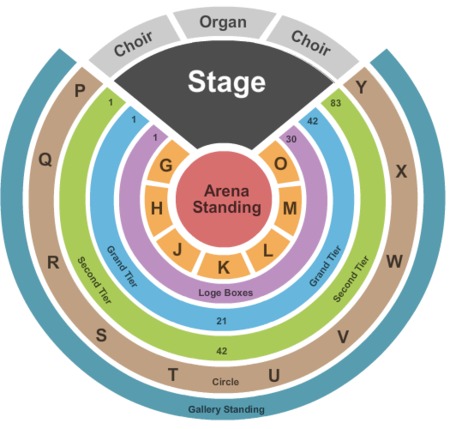Client Briefs: Establishing Clear Expectations

Table of Contents
The Importance of a Well-Defined Client Brief
A well-defined client brief is the bedrock of any successful project. It acts as a central repository of information, ensuring everyone involved – from designers and developers to project managers and clients – is on the same page. Without a clear brief, projects are prone to scope creep, missed deadlines, and ultimately, client dissatisfaction. The benefits of a comprehensive client brief are undeniable:
-
Reduces ambiguity and miscommunication: A clear brief minimizes misunderstandings by outlining project goals, expectations, and deliverables in detail. This eliminates the back-and-forth communication that wastes time and resources.
-
Ensures everyone is on the same page regarding goals, timelines, and deliverables: The brief serves as a single source of truth, ensuring consistent understanding across all stakeholders. This unified vision translates to more efficient workflows and better collaboration.
-
Minimizes revisions and rework, saving time and money: By clearly defining expectations upfront, you reduce the likelihood of costly revisions and rework later in the project. This leads to significant cost savings and improved project profitability.
-
Strengthens client-agency relationships built on trust and transparency: A well-structured client brief demonstrates your professionalism and commitment to transparency, fostering trust and strengthening the client-agency relationship.
-
Provides a solid foundation for project management and efficient resource allocation: A clear brief allows for better project planning, enabling more efficient resource allocation and timely project delivery.
Key Components of an Effective Client Brief
Every effective client brief should include these essential elements:
-
Project Overview: This section outlines the project's goals, objectives, and target audience. Clearly define what you aim to achieve and who you are trying to reach. Include a compelling project statement that encapsulates the essence of the project.
-
Background Information: Provide relevant context, including previous marketing efforts, market research, and competitor analysis. This information helps establish a foundation for informed decision-making.
-
Scope of Work: This is a crucial section, detailing all tasks, deliverables, and milestones. Be specific and avoid ambiguity. Use clear, measurable language to avoid misunderstandings.
-
Timeline and Deadlines: Establish a realistic and achievable project timeline with clearly defined deadlines for each milestone. Include buffer time to account for unforeseen circumstances.
-
Budget and Payment Terms: Transparency is key here. Provide a detailed breakdown of costs and the payment schedule. Outline any potential additional costs and how they will be handled.
-
Communication Plan: Specify how and how often you will communicate project updates to the client. Establish clear channels of communication and response times.
-
Approval Process: Clearly outline the process for reviewing and approving deliverables throughout the project lifecycle. This avoids delays and ensures everyone is on the same page.
-
Success Metrics: Define how the success of the project will be measured. This might include website traffic, lead generation, sales conversions, or other relevant KPIs.
Gathering Information for a Comprehensive Brief
Gathering accurate and comprehensive information is crucial for developing a robust client brief. Utilize these methods:
-
Conducting thorough client interviews: Schedule in-depth interviews to delve into the client's needs, goals, and expectations. Ask probing questions to uncover underlying motivations and challenges.
-
Utilizing questionnaires and surveys: Supplement interviews with questionnaires or surveys to gather structured information from the client and relevant stakeholders.
-
Analyzing existing marketing materials and competitor analysis: Review the client's existing marketing materials and conduct competitor analysis to understand their current market position and opportunities.
-
Collaboratively developing a project plan: Involve the client in the project planning process to foster a sense of ownership and collaboration. This also ensures that the brief accurately reflects their needs and expectations.
Best Practices for Creating and Using Client Briefs
Creating and managing effective client briefs requires careful planning and execution:
-
Keep it concise and easy to understand: Avoid jargon and technical terms. Use visuals like charts and graphs to present complex information clearly.
-
Use clear and consistent language, avoiding jargon: Ensure the language is easily understood by everyone involved, regardless of their technical expertise.
-
Regularly review and update the brief throughout the project lifecycle: Changes are inevitable. Regularly review and update the brief to reflect any changes in scope, timelines, or requirements.
-
Obtain client sign-off to ensure agreement and establish a formal record: Once the brief is finalized, obtain the client's formal sign-off to confirm their agreement and create a legally binding document.
-
Use project management software to centralize the brief and track progress: Utilize project management software to store, share, and update the brief centrally, facilitating easy access and progress tracking.
Addressing Common Challenges with Client Briefs
Despite careful planning, challenges can arise:
-
Client unwillingness to provide sufficient information: Address this by actively engaging the client, explaining the importance of detailed information, and offering support throughout the information-gathering process.
-
Conflicting expectations or unclear requirements: Address conflicting expectations through open communication and collaborative problem-solving. Clarify ambiguous requirements by asking clarifying questions.
-
Changes in scope or direction during the project: Establish a formal change management process to handle scope changes effectively. Document all changes and their impact on the project timeline and budget.
-
Difficulties in securing client approvals: Proactive communication, regular updates, and clear presentation of deliverables can ease the approval process.
Conclusion
Developing clear and comprehensive client briefs is paramount for successful project delivery. By incorporating the key components discussed above, and employing best practices, you can significantly reduce ambiguity, improve communication, and foster strong client relationships. Remember, a well-defined client brief isn’t just a document; it's the cornerstone of a successful partnership. Start creating effective client briefs today to transform your project outcomes!

Featured Posts
-
 The Karate Kid Character Analysis And Cinematic Impact
May 23, 2025
The Karate Kid Character Analysis And Cinematic Impact
May 23, 2025 -
 Grand Ole Opry At Royal Albert Hall Date Performers And Ticket Information
May 23, 2025
Grand Ole Opry At Royal Albert Hall Date Performers And Ticket Information
May 23, 2025 -
 Big Rig Rock Report 3 12 97 1 Double Q Data And Insights
May 23, 2025
Big Rig Rock Report 3 12 97 1 Double Q Data And Insights
May 23, 2025 -
 Grand Ole Opry Makes Royal Albert Hall History With First International Show
May 23, 2025
Grand Ole Opry Makes Royal Albert Hall History With First International Show
May 23, 2025 -
 Close Contest Bangladesh Fights Back Against Zimbabwe
May 23, 2025
Close Contest Bangladesh Fights Back Against Zimbabwe
May 23, 2025
Latest Posts
-
 Everything You Need To Know About Netflixs Sirens
May 23, 2025
Everything You Need To Know About Netflixs Sirens
May 23, 2025 -
 Netflix Sirens A Complete Guide To The Limited Series
May 23, 2025
Netflix Sirens A Complete Guide To The Limited Series
May 23, 2025 -
 Julianne Moore And Milly Alcock Star In Netflixs Cult Thriller Sirens
May 23, 2025
Julianne Moore And Milly Alcock Star In Netflixs Cult Thriller Sirens
May 23, 2025 -
 Siren Trailer A Closer Look At Julianne Moores New Role
May 23, 2025
Siren Trailer A Closer Look At Julianne Moores New Role
May 23, 2025 -
 First Look Julianne Moore In The Siren Trailer
May 23, 2025
First Look Julianne Moore In The Siren Trailer
May 23, 2025
